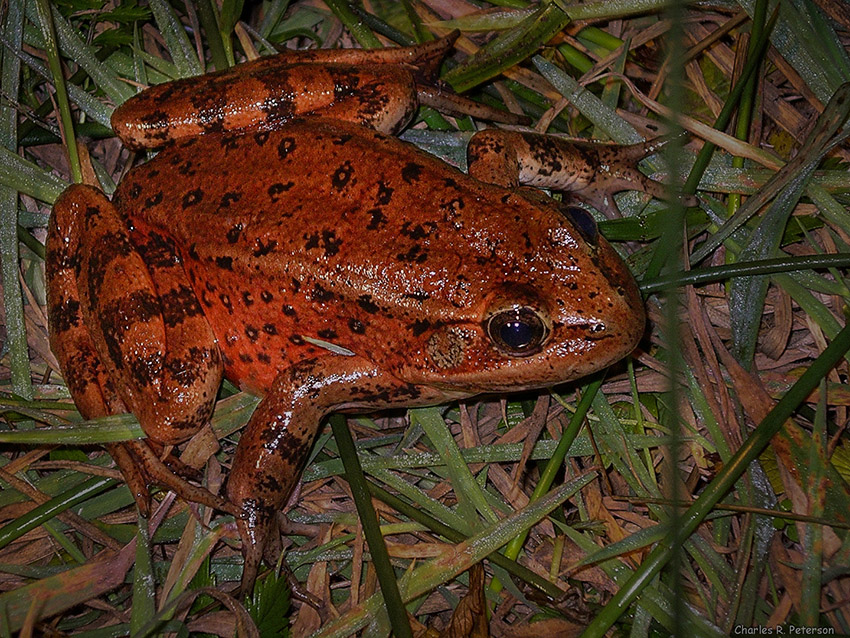In an inspiring show of cross-border teamwork, Mexican scientists have been at the forefront of restoring the rare California red-legged frog to some muddy ponds in Southern California — highlighting Mexico’s pivotal role in the revival of a species teetering on the brink.
From a small office in Ensenada, Baja California, biologist Anny Peralta and her team at the nonprofit Fauna del Noroeste have devoted years to boosting the numbers of the frog, listed as “endangered” in Mexico and “threatened” in the U.S.
Through painstaking habitat restoration, they grew a frog population in Mexico’s borderlands from just 20 individuals to more than 400 — a lifeline for the species after it vanished from 95% of its original American range.
Working with U.S. scientists, Mexican teams engineered wetland habitats in the Santa Rosa Plateau Ecological Reserve, a protected natural area in the Santa Ana Mountains in southwest Riverside County, California.
By 2018, the Mexican team was prepared to send precious egg masses north. Despite delays caused by the pandemic, Mexican pilots and researchers ensured the eggs made a carefully regulated journey across the border and into the ponds to hatch as tadpoles.
Then in early 2025 came a payoff. Brad Hollingsworth, a San Diego herpetologist, used artificial intelligence to analyze lengthy audio recordings made at a California restoration pond.

Sifting through a chorus of owls, woodpeckers and coyotes, the AI analysis also picked up the unmistakable grunt-like mating call of red-legged frogs — the first evidence that Mexico’s eggs were thriving and breeding on U.S. soil.
“It felt like a big burden off my shoulder because we were thinking the project might be failing,” Hollingsworth said. “And then the next couple nights we started hearing more and more and more, and more, and more.”
Moreover, missing from the recordings was the sound of the bullfrog, a species that, once introduced to the region, had helped wipe out much of the red-legged frog’s original Southern California range by outcompeting them for food, as well as infecting them. Drought, urban growth and predators also reduced populations.
Now, more than 100 adults populate Southern California ponds.
As climate change and border wall construction threaten to fragment habitats, Peralta underscores the binational effort. “They don’t know about borders or visas or passports,” she said of the frogs. “This is just their habitat and these populations need to reconnect.”
The California red-legged frog is typically red or green-brown with irregular black markings, rough skin, and crimson coloring on the undersides of its legs and belly.
The species (Rana draytonii) is believed to be the star of Mark Twain’s 1865 short story, “The Celebrated Jumping Frog of Calaveras County,” and their hind legs were eaten regularly during the California Gold Rush era (only to be replaced as their numbers declined by bullfrogs, which have even bigger hind legs).
At 5 to 13 centimeters long (2 to 5 inches), red-legged frogs are the largest native frogs in the western U.S. and once were found in abundance up and down the California coast and into Mexico. It is in no way related to perhaps Mexico’s most famous amphibian, Señor Frog.
With reports from The Independent, Associated Press, La Verdad Noticias
